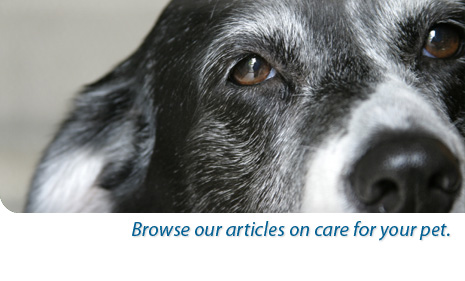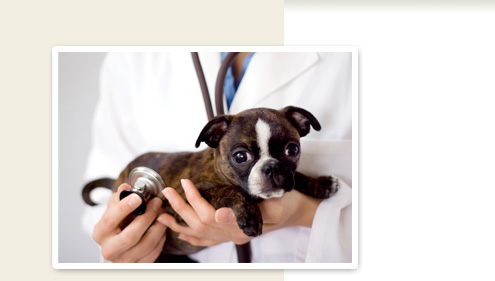
Home Health Care
Nail Trim
Nail trimming should become a part of your pets routine early in life. Start by trimming only a few nails at a time. Give lots of treats and praise to help make the experience a postivie one for you and your pet.
Cats: Push down gently on the furthest part of your catís toe. This will expose the nail. Look for the pink portion at the base of the nail, this area contains the blood vessels and nerves. Trim the white portion up to a 3-4mm before the pink section of the nail with a sharp pair of nail clippers. Trim both front and back claws. Do not forget to trim the dewclaws- these nails are found on the inside of the paws, and are the equivalent of human thumbs. They do not occur in all cats, and are generally just on the front paws.
Dogs: Some dogs have white nails, while others have black nails. If your dog has white nails, look for the pink portion at the base of the nail. This area contains the blood vessels and nerves. Trim the white portion up to 4-5mm before the pink section of the nail with a sharp pair of dog nail clippers.
If your dog has black nails, trim back the end of the nail, and look at the nail. As you get closer to the blood vessels, you will be able to see a dark circle at the centre of the nail.
Trim both front and back claws. Do not forget to trim the dewclaws- these nails are found on the inner side portion of the paw, and are the equivalent of human thumbs. They are present on the front paws of most dogs, and on some dogs on the back paws as well.
Ear Cleaning
Check your pets ears routinely for debris, discharge and odours. Some pets need cleaning more often than others, over time you will get to know how often your petís ears need to be cleaned.
When cleaning your petís ears use an appropriate cat and dog cleanser, which can be purchased at your veterinarian or at a pet store. Do not use human products, water, oil or vinegar unless your veterinarian instructs you to do so.
To clean the ears, pull up on the outer portion of the ear, called the pinna. Pour several drops of cleanser into your petís ears. Gently massage the base of the ear for 5-10 seconds, you should be able to hear liquid moving around as you massage. Use a cotton ball or gauze to wipe away excess cleanser and any debris that you have dislodge. You may push your finger into the ear to reach for debris. Do not worry about harming your pet, your finger is too large to reach the sensitive portions of the ear. DO NOT use a cotton-tip swab or Q-tip to clean the ear, unlike your finger, the swab can go far enough into the ear canal to damage the ear drum.
If you notice an unusual amount of debris, a difference in the colour or texture of debris, redness in the ear or an unusual odour, this may be a sign of an ear infection, and you should bring your pet to the veterinarian immediately.
Tooth Brushing
Although not always an easy task, your pet should have their teeth brushed daily, just like you, to help ensure proper dental hygiene. Some pets are not always amenable to this, but if you start early in life, they can become accustomed to it. Remember, some brushing is better than no brushing!
Start by getting your pet used to you handling their mouth. Use just your finger, and lift their lips up gently, and begin rubbing the sides of their teeth. Make this a positive experience by offering treats and praise, and keeping it short to begin with. Once your pet is comfortable with this, start using either a finger brush or a infant tooth brush to gentle circle the outside surfaces of the teeth. Make sure to pull the lips back to reach the teeth further back in the mouth. Because of the way dogs and cats bite and chew, there is not a lot of build-up on the inner surfaces of the teeth, and brushing them is not recommended. Once your pet is used to a tooth brush, add a pet toothpaste to your routine. DO NOT use human toothpastes, they contain fluoride and other substances that are not safe for your pets to consume, unlike you, your pets to not rinse and spit after they are done brushing!
Brushing teeth routinely, using safe dental treats and dental diets, as recommended by your veterinarian, can help combat dental disease and keep your petís mouth healthy for many years to come.
